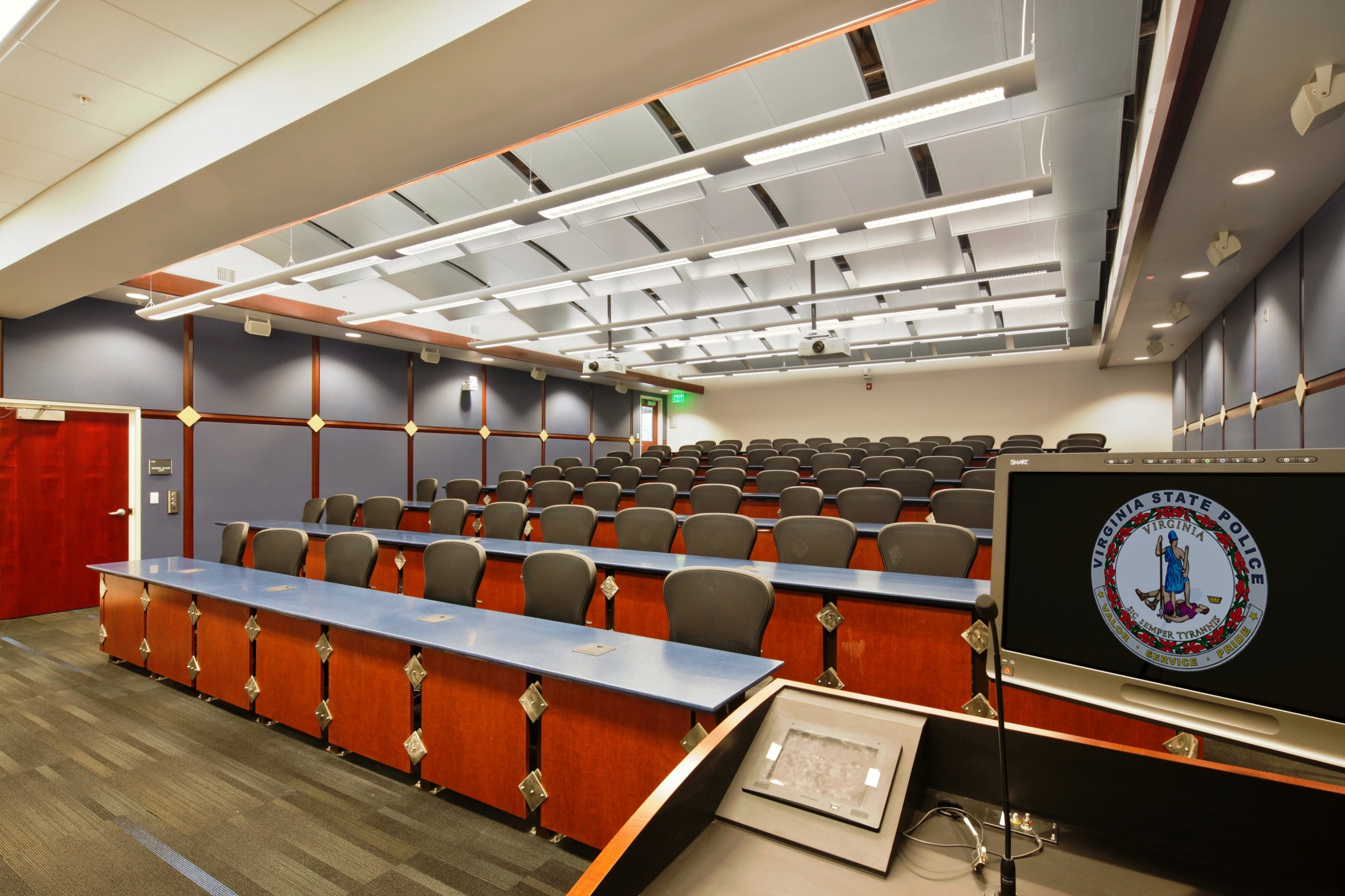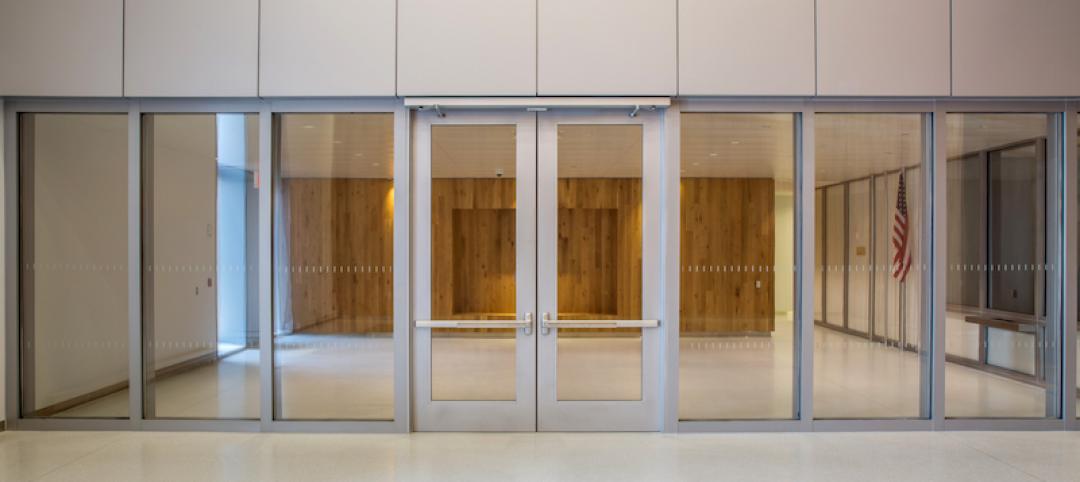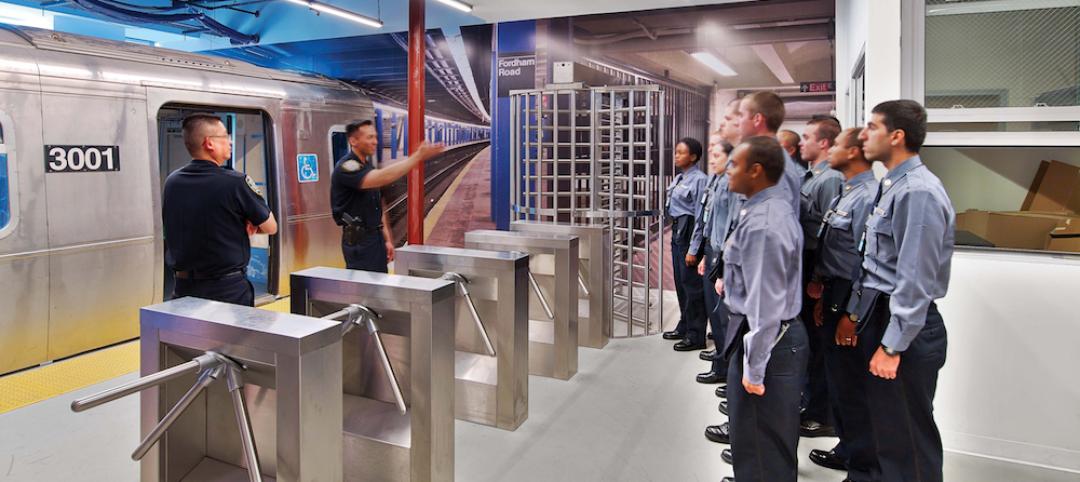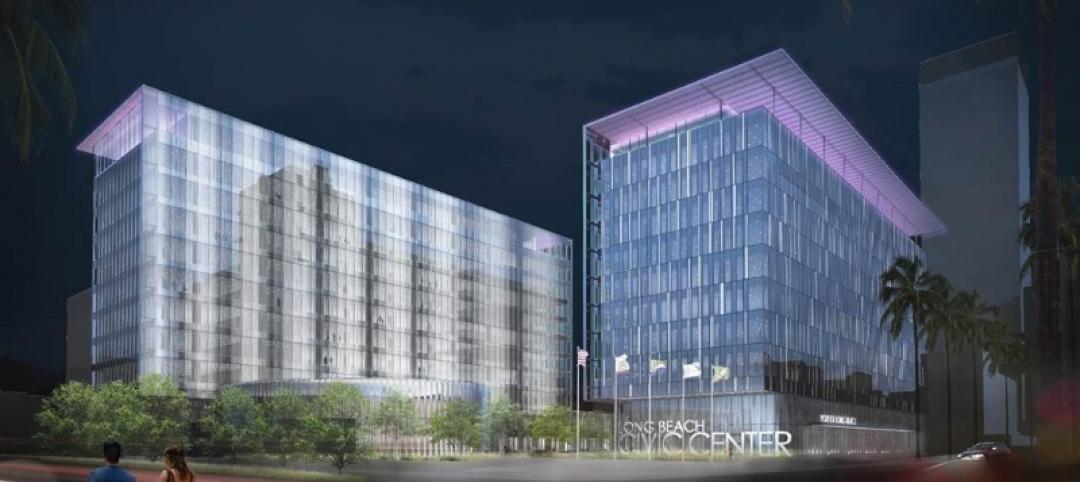The Virginia State Police will soon begin driver training in a new $27.4 million complex set on 680 acres near Fort Pickett, just outside the town of Blackstone. Designed by Dewberry and constructed by KBS Inc., the facility includes 4.5 miles of urban, rural, and interstate roadway courses that simulate Virginia topography; a three-story, 52,000-sf training and dormitory building; an observation tower; and a vehicle maintenance garage.
The new training tracks feature a variety of road configurations, including a cloverleaf ramp, city intersections, interstate acceleration lanes, a roundabout, railroad tracks, a 25,000-sf skidpan, cul-de-sacs, and a 342,000-sf precision-driving course. The facility enables the police to combine behind-the-wheel training with simulations and classroom instruction at one site.
The training building includes 60 squad rooms that accommodate up to 120 cadets, theater-style classrooms, a cafeteria, offices, meeting space, and a driver simulation room with 550 LE Interactive Driving Simulation Systems that model the cockpit of a police cruiser.
Construction of a new firing range is set to begin this spring. The building was also designed to serve as an alternate emergency operations center for the Virginia State Police.
Design of the building combines brick, precast architectural block, and glass curtainwall. “The architecture reflects the modern, state-of-the-art training approach provided by the Virginia State Police, with a streamlined academic aesthetic in the materials and vertical elements,” says Larry Hasson, AIA, who led the architectural design team for Dewberry. In addition to architecture, Dewberry provided interior design and mechanical/electrical, structural, civil, and environmental engineering. +
Related Stories
| Aug 15, 2016
Top 40 Military Construction Firms
Fluor Corp., The Walsh Group, and Hensel Phelps top Building Design+Construction’s annual ranking of the nation’s largest military sector construction and construction management firms, as reported in the 2016 Giants 300 Report.
Sponsored | Glass and Glazing | Jun 20, 2016
Fire resistive blast and ballistic glass walls in high security facilities
For federal courthouses, embassies, government facilities and other high profile buildings, building materials are chosen based on their ability to mitigate or minimize the injuries and fatalities to occupants during an attack.
Building Team Awards | May 27, 2016
Big police academy trains thousands of New York's finest
The Police Training Academy in Queens, N.Y., consists of a 480,000-sf academic/administration building and a 240,000-sf physical training facility, linked by an aerial pedestrian bridge.
Government Buildings | Apr 22, 2016
Public-private partnership used to fund Long Beach Civic Center Project
Arup served as a lead advisor and oversaw financial, commercial, real estate, design, engineering, and cost consulting.
Architects | Mar 16, 2016
PGAL acquires Dallas-based Pro Forma Architecture
The merger adds a firm that has specialized in municipal projects.
Industry Research | Feb 22, 2016
8 of the most interesting trends from Gensler’s Design Forecast 2016
Technology is running wild in Gensler’s 2016 forecast, as things like virtual reality, "smart" buildings and products, and fully connected online and offline worlds are making their presence felt throughout many of the future's top trends.
Government Buildings | Feb 4, 2016
Bronx police station design revealed by Bjarke Ingels Group
The blocky, modern design is meant to convey accessibility and public service.
Government Buildings | Jan 26, 2016
California governor proposes $1.5 billion to repair, replace state buildings
The program would include two new state office buildings in Sacramento.
Architects | Jan 15, 2016
Best in Architecture: 18 projects named AIA Institute Honor Award winners
Morphosis' Perot Museum and Studio Gang's WMS Boathouse are among the projects to win AIA's highest honor for architecture.
| Jan 14, 2016
How to succeed with EIFS: exterior insulation and finish systems
This AIA CES Discovery course discusses the six elements of an EIFS wall assembly; common EIFS failures and how to prevent them; and EIFS and sustainability.
















